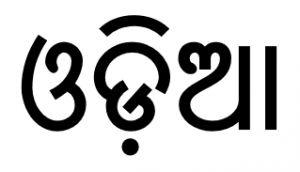Language/Odia/Grammar/Present-Tense
Introduction
In this lesson, you will learn how to form and use the present tense of Odia verbs. The present tense is used to describe actions that are currently happening, habitual actions, or general truths. By the end of this lesson, you will be able to form and use present tense verbs in simple sentences.
Present Tense Verb Formation
In Odia, the present tense verb form is created by adding a suffix to the verb stem. The suffixes used depend on the type of verb, of which there are three:
- ru-verbs: These verbs end in -ରେ (-re) in their present tense forms. Some common examples of ru-verbs are:
- ଖାଇବା (khāibā) – to eat
- ପଢିବା (paḍhibā) – to read
- ଜାଣିବା (jāṇibā) – to know
- bu-verbs: These verbs end in -ବେ (-be) in their present tense forms. Some common examples of bu-verbs are:
- ଥିବା (thibā) – to be
- ଅଚଳା (acaḷā) – to stay
- କରିବା (karibā) – to do
- tu-verbs: These verbs end in -ଥିବା (-thibā) in their present tense forms. Some common examples of tu-verbs are:
- ପଡିବା (paṛibā) – to fall
- ଚାଲିବା (cālibā) – to walk
- ମିଳିବା (miḷibā) – to meet
Verb Stem
Before adding the present tense suffix to a verb, you must first identify the verb stem. The stem is the part of the verb that comes before the tense suffix. To find the stem of a ru-verb, remove the -ଇବା (-ibā) ending from the infinitive form of the verb. For example:
- ଖାଇବା (khāibā) – to eat → ଖା (khā) – stem
- ପଢିବା (paḍhibā) – to read → ପଢ (paḍha) – stem
- ଜାଣିବା (jāṇibā) – to know → ଜାଣ (jāṇa) – stem
To find the stem of a bu-verb or tu-verb, remove the -ିବା (-ibā) ending from the infinitive form of the verb. Then, remove the final consonant of the stem. For example:
- ଥିବା (thibā) – to be → ଥ (tha) – stem
- ଅଚଳା (acaḷā) – to stay → ଅଚଳ (acaḷa) – stem → ଅଚଳ୍ (acaḷ) – stem (without final consonant)
- ପଡିବା (paṛibā) – to fall → ପଡ (paṛa) – stem → ପଡ୍ (paṛ) – stem (without final consonant)
Present Tense Suffixes
Once you have identified the verb stem, you can add the appropriate present tense suffix to create the present tense verb form. The present tense suffixes are:
- -ରେ (-re) for ru-verbs
- -ବେ (-be) for bu-verbs
- -ଥିବା (-thibā) for tu-verbs
Here are some examples:
| Odia | Pronunciation | English |
|---|---|---|
| ଖାରେ | khā-re | I eat |
| ପଢିବେ | paḍhi-be | You read |
| ଜାଣିବେ | jāṇi-be | He knows |
| ଥାଇବା | thā-ibā | I am |
| ଅଚଳାଇବେ | a-caḷā-i-be | You stay |
| ପଡୁଥିବା | paṛu-thibā | He falls |
Notice that the subject is typically not explicitly stated in Odia sentences unless it is necessary for clarification or emphasis. Instead, the verb form itself indicates the subject.
Irregular Verbs
Like in most languages, there are a few Odia verbs that are irregular in the present tense. They do not follow the standard pattern of adding a suffix to the verb stem. Here are some common irregular verbs in the present tense:
| Odia | Pronunciation | English |
|---|---|---|
| ଆସିବା | ā-sibā | to come |
| ଯାଇବା | jā-ibā | to go |
| ହୋଇଥିବା | ho-i-thibā | to exist |
These verbs must be memorized since they do not follow the standard verb pattern. Fortunately, the number of irregular verbs in Odia is relatively small compared to other languages.
Present Tense Usage
Now that you know how to form present tense verbs, let's discuss when to use them. The present tense is used in the following situations:
- Actions happening right now: The present tense is used to describe actions that are happening at the moment of speaking. For example:
- ମୁଁ ଖାରେ । (muṅ khāre.) – I am eating.
- ସମୟରେ ପଡ଼ିବେ । (sama-yare paṛi-be.) – You are reading now.
- ସତ୍ୟ କହିବା ପଡିବେ । (satya kahi-bā paḍhi-be.) – He is telling the truth.
- Habitual actions: The present tense can be used to describe actions that are generally true or habitual, such as daily routines or usual behaviors. For example:
- ପଡିବେ ଟିକେ ଚାଲିବେ । (paḍhi-be ṭike cāli-be.) – He reads and then walks.
- ନିଦ୍ରା ଝୁମିବେ । (nidrā jhum-i-be.) – She sleeps regularly.
- ସବୁଠୁ ଚାଲୁ ଥିବା କାର୍ଯ୍ୟ । (sa-bu-ṭhu cālu thibā kār-ya.) – The work is always ongoing.
- General truth: The present tense can also be used to describe general truths or facts that are not limited by time. For example:
- ସତ
Videos
Present Indefinite Tense in Odia - 2 ...

